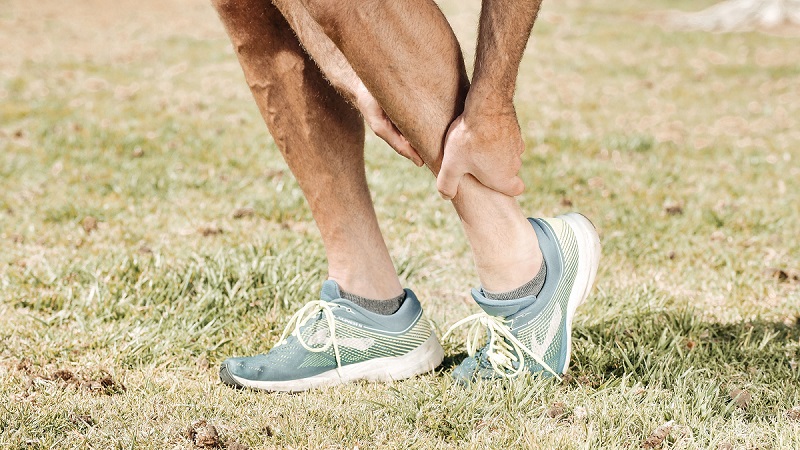Table of Contents
Wanna know about common lower leg running injuries? Read the whole blog to know about injuries, causes, and preventions.
Running is the most common hobby, and sport opted by people to keep their bodies fit and healthy shape. It is among the three most popular hobbies of people around the globe. Running is known as the most versatile hobby, which also serves as a resource for health.
It is merely not an exercise but also a way to release stress and boost mood. People who run frequently know how healthy it is, but others keep assuming it is a non-fun and tiring activity because of fatigue and injuries. But once running becomes a habit, it will change one’s life forever.
Why do Runners Face Lower Leg Injuries?
Most runners usually complain about lower leg pain and injuries, and it happens because of sudden injury or stress in muscles, tendons, or bones.
While running, the lower leg, calf, and Achilles tendon work jointly to produce force. It pushes the legs off the ground on each step a runner takes. At the same time, the shin bone performs the role of a force absorber. Pain or injury occurs when these parts are weak.
5 Common Lower Leg Running Injuries
These five common lower leg injuries are caused by running and affecting the health. But there isn’t a problem that doesn’t have a solution, these injuries also have prevention to be followed.
1. Plantar Fasciitis
It is commonly known as a stabbing pain in the heel and goes to the base of the toes. The pain starts at the beginning of the day, and it might go off with time but would start again after running or more extended periods of standing.
Causes
Generally, this type of lower leg injury occurs due to tightness throughout the calf muscles, weak muscles of the foot, and poorly managed lower leg mechanics. The pain must be reported and consulted by a physician or physiotherapist.
Otherwise, it can turn into chronic pain that might hinder a person’s daily activities. If ignored, it can ultimately result in the entirely frozen movement of the lower leg and affect hip muscles.
Prevention
The best way to avoid lower leg injury, i.e., plantar fasciitis, is to maintain a healthy weight and exercise regularly, and the most critical prevention strategy is to include stretching in daily routine because it helps the tendons and ligaments, and joints to remain in an intact shape. Such practices would make the muscles more flexible and help prevent the pain.
2. Achilles Tendonitis
Achilles Tendonitis is a lower leg injury known by the mild level of pain at the back of the legs and trims above the heel, and it is mostly felt after the running activity. If one keeps ignoring the pain, it might lead to severe pain levels. Later on, one might also experience episodic pain of even more severe levels.
See running shoes for Achilles tendonitis
Usually, the lower leg muscles start to feel tenderness and stiffness in the morning and disappear as the day activities start.
Causes
This type of lower leg injury occurs when regular runners suddenly increase their activity timing or intensity, so their muscles go under acute stress. The damage is most common in middle-aged people with weak muscles and joints.
Prevention
Often such cases are solved with home remedies and exercise in acute conditions, but one needs to consult a physiotherapist in chronic or severe cases.
On a general note, self-care strategies are recommended for people of middle age who are frequent runners to avoid recurrent injury. Because severe or frequent injuries can lead to a rupture in tendons, this condition might need surgery.
After recovering from damage, the runners are recommended to do some mild-level exercise daily; they might add pool running, yoga, or swimming into practice, as it helps keep the muscles intact without putting stress on them.
Later on, over time, the runners can get back to their average level of running.
3. shin splints
Medial Tibial Stress Syndrom Or Shin splints are categorized by the irritating pain around the tibia, a large bone at the front of the lower leg. Shin splints are the most common lower leg injury in runners.
This type of injury is more common in those runners who frequently change their running patterns, and consequently, their muscles around the tibia get affected. At the time of injury, the pain levels are very severe and gradually decrease with the help of exercise and some changes in the running routine.
Causes
The continuous stress generally causes it over the shinbone and connective tissues around it; usually, when the runner ignores the pain and doesn’t make changes in running activity, the pain worsens due to an increased level of stress bone.
Prevention
The frequent runners must check their pain levels and note any unusual pain or symptoms. Shinbone lower leg injury is painless initially, and as the stress increases, the pain also starts to increase.
To avoid the symptomatic pain, one must change the running pattern and do lighter exercises for initial prevention. But if the pain persists, one must consult the doctor for proper treatment.
The runners are often encouraged to avoid running very fast, climb up the hills with fast running, and prevent running in an uneven pattern after recovering from injury. Slowly and steadily, they can get back to their standard running practices.
4. Calf Strain
It is a severe condition where the whole leg feels weak, and movement seems impossible. Usually, in typical cases, when the ligaments, tendons, and muscles are working in fine coordination, the runner might never feel any pain, but a calf strain is a condition when any of these muscles is pulled inside and becomes the reason for complicated pain. A calf strain is also a leading cause of heel pain.
Causes
Calf muscle – lower leg injury is mainly caused by a sudden movement or overstretches of the calf muscle, which immediately causes the runner to stop. It can be caused due to a quick jump or fast running.
Prevention
A lower leg injury occurring due to calf muscles can only be avoided by making some lifestyle changes, for example, stretching routinely, taking proper rest after running, warming up before starting to run, and using footwear that fits properly and doesn’t make the foot slip during running.
5. Ankle Sprain
See 3 common ankle injuries from running
It is a lower leg running injury that is caused by foot twisting during running, usually occurring when a runner’s ankle or foot is twisted in an odd way. This activity causes a serious stretch in the ankle and it causes the inner muscles to rupture.
The process of rupture causes severe pain and in some cases the ankle becomes immovable, the condition is medically designated as an ankle sprain.
see best shoes for bad ankles.
Causes
A sprain in the ankle is caused when the ankle is twisted badly and is moved out of its normal position.
Consequently, the ligaments are temporarily or permanently torn apart. The major causes include a sudden hurdle during running which cause the foot to twist, weak muscles which get twisted on their own due to running fatigue, and in some cases when another person runs over the ankle accidentally.
Prevention
There are various ways to prevent ankle sprain during running which include warm-up exercises so that the lower leg muscles are ready for the run and don’t get any sudden or shock stress. One must be careful while running and chose a track that doesn’t have many obstacles on it, or the road isn’t too tidy to cause an accident.
The runner must be wearing nicely fit shoes because most of the time ankle twist is also caused by unfit or loose shoes. In case of injury, one must avoid running because this might also lead to an ankle sprain which is a very painful lower leg injury.
Do Running Shoes Cause or Prevent Lower Leg Injury?
There is a great debate whether shoe plays any role in causing or preventing lower leg injury. The answer is yes for both cases.
Because the shoes made specifically for running would definitely prevent the injury but any other non-specific shoes could be a cause of leg injury because of support issues etc. But on a general level, any shoe which is not fit in the foot of the runner would cause harm at some level and that might lead to a significantly severe lower leg injury.
So, the runners must choose carefully in order to prevent any lower leg injury. Because the shoes serve as a base not just for the foot but for whole leg muscles, uncomfortable shoes can cause stress for leg muscles and joints which consequently cause lower leg injury. Choosing the right kind of shoes also helps to maintain body balance while running.
Also, running experts suggest having 2 shoes to use in the rotation if you run on a regular basis. this method will allow cushioning to set back in place to be ready for the next run.
Conclusion
In a nutshell, running is a very healthy habit. but, it can be painful at times because of barbaric practices and can lead to unfortunate situations. These lower leg injuries are an integral part of a runner’s life but can only be avoided by a healthy lifestyle and workout routines.

I’m Shafey. An avid runner since 2012. I am one of few people who like doing cardio instead of muscle building. I love spending time on treadmills, tracks, pavements, or any surface rather than exercising with dumbles.
With all those years of experience and spending the whole night reading blogs and researching different concepts of running. Learned a lot about new tips and tricks. In those years tried different running shoes (from $ to $$$). I got a great knowledge that can be shared with others. I may not be a professional running coach but YES an experienced runner who can guide right to beginners.✌️✌️


